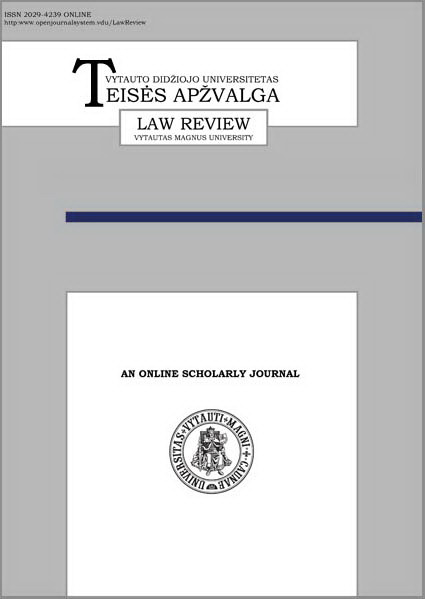Surrogacy versus Artificial Womb Technology: The Future of Reproduction in the European Union
Surrogacy versus Artificial Womb Technology: The Future of Reproduction in the European Union
Author(s): Katarzyna OsmendaSubject(s): Law, Constitution, Jurisprudence, Health and medicine and law, Family and social welfare, EU-Legislation, Sociology of Law
Published by: Vytauto Didžiojo Universitetas
Keywords: Surrogate motherhood; Mother; Artificial womb technology; Ectogenesis; European Union;
Summary/Abstract: Author of this article discussed the issue of surrogate motherhood laws and practices in the European Union, and tried to consider whether the artificial womb technology (AWT) could constitute an alternative in terms of assisted reproductive technologies (ART) and other means of treating infertility. For the purpose of answering this question, a formal-dogmatic approach was applied. In order to provide necessary context, the legislative research was supplemented by the case law and secondary source research as well. Part one provides a brief explanation of the artificial womb technology. It begins with a general understanding of ectogenesis, followed by a description of current AWT research, both in terms of medical sciences and the legal and ethical considerations carried out by different authors. Section two is dedicated to the phenomena of motherhood and surrogate motherhood. Author presents several definitions of “mother”, including a gestational, biological, genetic, social, and legal one. The attention is also drawn to the legal definition of a mother on the example of selected EU countries. In order to provide a better understanding of possible motives behind the introduction of mater semper certa est principle into the applicable law, Author refers to the amendment of the Polish Family and Guardianship Code from November 6, 2008, along with the explanatory memorandum to this amendment. Lastly, the concept of surrogate motherhood is explained. Part three discovers surrogate motherhood laws in different countries of the European Union. The diversity of approaches toward surrogacy is classified in the following manner: legalization of surrogacy (complete and partial), prohibition of surrogacy (complete and partial), and no regulation on surrogacy. Established classification is followed by examples of Cypriot, Spanish, and Belgian law. It has been furthermore emphasized that, despite the inconsistency of the EU countries’ law, surrogacy is still practiced and leads to various consequences in terms of, for example, legal recognition of parenthood. In this section, Author referred to the European Court of Human Rights’ cases. In the last part, most frequent critiques of surrogate motherhood are recalled: the high risk of commodification and commercialization of the human body, possible exploitation of women, and legal uncertainty of a child born through a surrogacy agreement. Author tries to assess whether AWT is devoid of them and therefore could constitute a less hazardous option when utilized for reproduction purposes, bearing in mind its possible consequences.
Journal: Teisės apžvalga
- Issue Year: 2024
- Issue No: 1(29)
- Page Range: 41-63
- Page Count: 23
- Language: English

